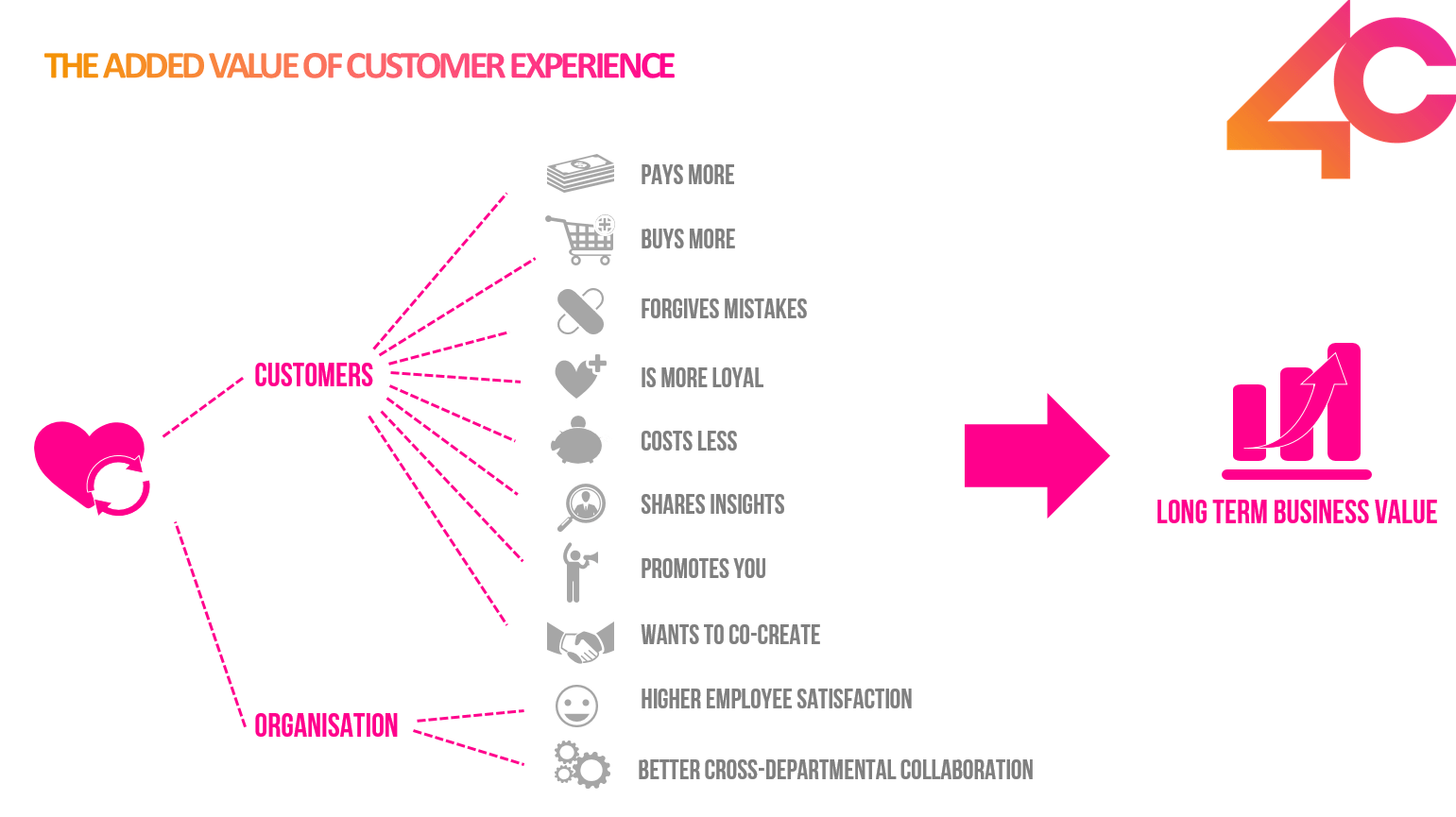The value of Customer Experience
No matter which industry you are in, you cannot ignore the fact that technology has created strong empowered customers. The digital world provides customers with a truckload of information about your products and services, gives them the ability to shop anywhere and anytime; and gives them the tools to rate your brand on social media. In other words, the age of the customer has arrived, making companies face the big challenge of incorporating the customer perspective and of creating positive, consistent experiences.
Yet with big challenge, comes big reward: companies who invest in customer experience and manage to create positive, consistent relations with their customers, have a significant advantage over competitors who don’t invest in customer experience.

Choosing where to start
So far so good, companies are convinced of the value of customer experience and the concept has evolved from a nice to have, to a must have in service and business. Yet, experience tells us that it is still quite difficult to effectively incorporate customer experience in organisations. One of the main reasons is the vastness of the ‘domain customer experience’ and the difficult decision on where to begin and what to implement first:
“Do we start with optimizing our complaint process? Or do we focus on building a customer journey first? Maybe we should implement a customer feedback system to know what our customers think of us…Or should we implement a new CRM system?”
In too many cases this decision is made without having a well-organized overview of organizational needs and without a business case or strategic roadmap.
A real-life example to demonstrate this:
A marketing manager, inspired by the dazzling use cases of marketing automation, convinced his management of the value of a marketing automation tool. The idea of providing personalized content, automatic tracking and scoring of opportunities was inspiring enough to free resources and invest in a shiny new tool. However, once everything was implemented they quickly noticed results weren’t as expected, the tool seemed less user-friendly as during demo’s and KPI’s stayed as they were…
So what happened? Management had failed to consider the maturity of their own organisation and marketing department before making their decision. Thus, missing the fact that they weren’t at all ready for marketing automation: there was no well-defined campaign process designed to help set consistent goals, there were almost no usable customer insights to generate (relevant) personal content and there was no clear ownership of the different tasks. Management had selected the sexiest solution, instead of the effective option of optimizing internal processes. The result was a big investment with low measurable gains, a decreasing belief in becoming more customer focused and a missed opportunity to improve services.
What to keep in mind
It is important to understand that the list of potential projects in customer experience is near endless and the only way to deal with this overload is to design a tailored and structured roadmap. You can compare this with building a house: no way you can construct a safe building before having a clearly drawn blueprint. Same goes for investing in customer experience: a well-constructed blueprint is the key for success!
To design this roadmap, you should take 4 factors into account:
- Your organizational maturity
Only invest in projects your organisation is actually ready for. Often this is not the most sexy solution (for example: process optimisation versus a shiny new tool), but it will allow you to make a real difference.
- The type of industry you are in
Don’t blindly copy ideas of other companies or industries. Each industry and each organization has its own challenges and specific context. Banking will never have the same experience as festivals like ‘Tomorrowland’, aiming to achieve this would result in high cost, low gain projects. Make sure to invest in projects with a real impact for your customers and organisation.
- The strategic objectives of your organisation
It’s important to be aware of the strategic goal of your organisation and to make decisions according to this objective. This will enable you to be consistent across your different projects and to create support, vision and consistency within the entire organisation.
- The potential value
Don’t dive headfirst into projects without knowing what the potential return or added value for your organisation will be. Making a business case is often difficult or cumbersome, but it will help you to make the right decisions and prevent failures.
If you invest in designing a roadmap while keeping these factors in mind, you will be able to identify priority projects, positively influence your success rate and structurally evolve towards a customer company. 4C has developed a proven methodology to help you with the design of such a customer company roadmap.

